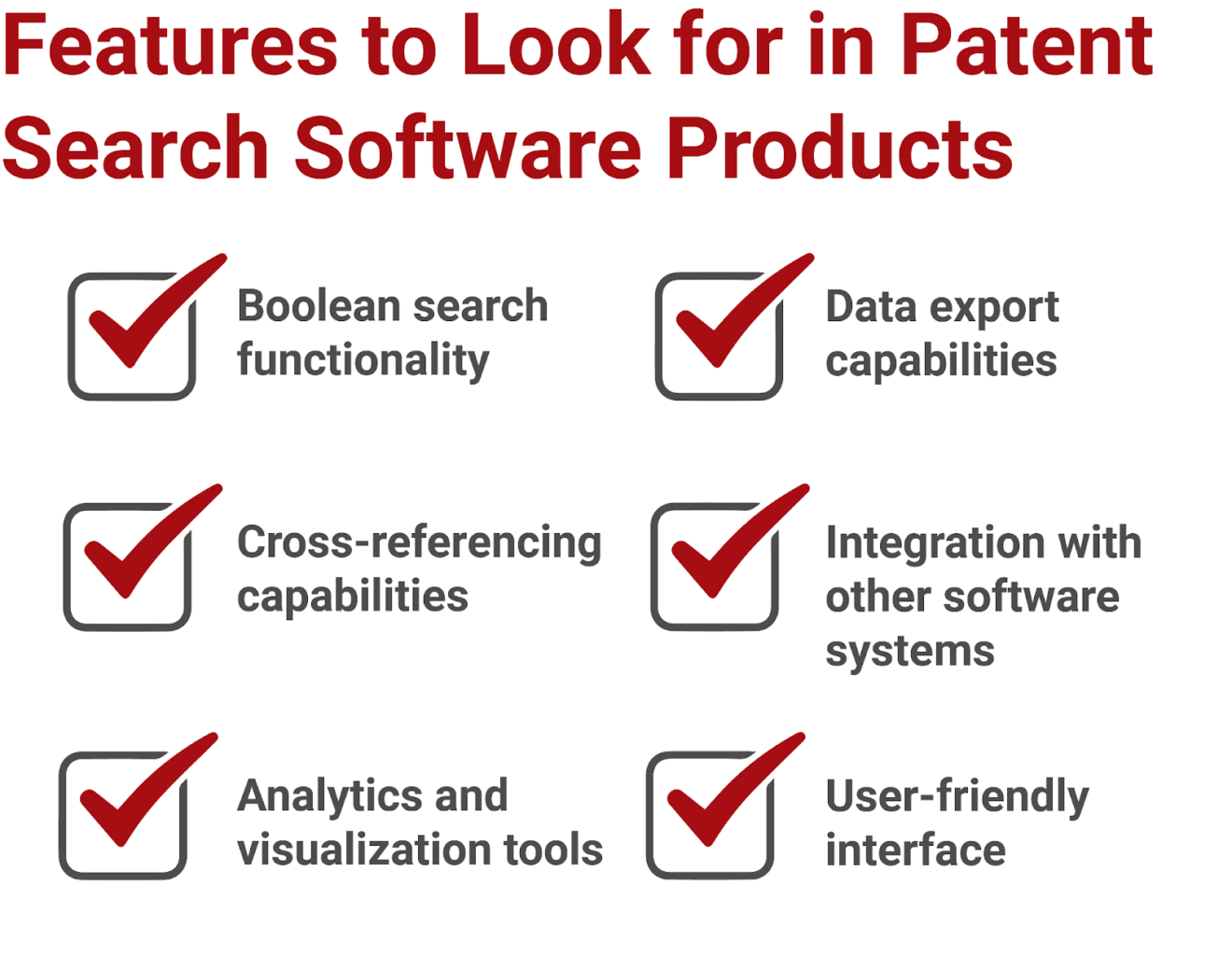A patent search is a long and tedious process, one that can often take a significant amount of expertise, not to mention knowing what to look for and how to find it. Access to a patent search software can solve this problem by empowering companies and individuals to do more in less time.
Who Needs Patent Search Software?
Various individuals and entities may need access to patent data for different purposes. Here are some examples:
Inventors and Innovators: Individuals who are developing new inventions or innovations may need access to patent data to conduct prior art searches. This helps them determine if their invention is novel and non-obvious, and to understand the existing state of the art.
Researchers and Academics: Researchers in various fields may require access to patent data to study technological trends, track innovation, and analyze the impact of patents on specific industries. Academics may also study patent data to conduct economic or legal research.
Intellectual Property Attorneys: Attorneys specializing in intellectual property law often rely on patent data to conduct searches and due diligence for clients. They need access to patent databases to assess the patentability of inventions, conduct infringement analyses, and provide legal advice on patent matters.
Companies and Businesses: Businesses and corporations may use patent data to conduct competitive analysis, monitor their industry landscape, and identify potential licensing or acquisition opportunities. Patents can provide valuable insights into a company’s research and development activities.
Government Agencies: Patent offices and government agencies responsible for intellectual property protection and regulation require access to patent data to examine patent applications, grant patents, and enforce patent rights. They also use patent data to formulate policies and support decision-making processes.
Investors and Venture Capitalists: Investors interested in funding innovative ventures often review patent data to evaluate the strength and potential value of a company’s intellectual property portfolio. Patents can provide an indication of a company’s technological advantage and market potential.
Technology Transfer Offices: Academic institutions and research organizations have technology transfer offices that manage the commercialization of inventions and facilitate collaborations with industry. These offices rely on patent data to assess the market potential of inventions and negotiate licensing agreements.
Startups and Entrepreneurs: Startups and entrepreneurs may access patent data to evaluate the competitive landscape and determine if their business idea infringes upon existing patents. This information can help them make informed decisions about product development and intellectual property strategy.
All of these individuals and entities benefit from the use of a patent search software platform that does the hard work for them. Beyond a doubt, it reduces costs and improves research outcomes while streamlining the process.
Types of Patent Search Software
Core to the process is ensuring that the search is completed in a way that makes sense for the product or development process. There are numerous types of patent search software capable of meeting most needs including:
- Keyword-based search tools: These tools focus on words, including words to describe what a product is, how it works, its features, or other descriptive terminology.
- Classification-based search tools: This type of search focuses on the classification field used in the database, also known as the Cooperative Patent Classification or CPC.
- Image-based search tools: When it comes to seeking image details, a prior art search is critical. This will include images that show the look and function of the system, but also any specific design features important to the patent application.
- Citation-based search tools: This type of search will look at legally protected inventions, including the descriptions of how those inventions look and function based on the references provided.
Which type of search tool is best suited for any task is ultimately dependent on things like the features or functional aspects of the product that make it unique from other products.
Features to Look for in Patent Search Software Products
Not all solutions are equal. Yet, it is critical to identify any type of overlap from one product to the next to minimize violations of intellectual property rights. To do that, focus on the key features that make some products more effective and efficient than others.
Boolean search functionality: This feature of any search tool allows for the combination of words and phrases using Boolean operators, such as AND, OR, and NOT. This can help to restrict or broaden access within a search tool.
Cross-referencing capabilities: Cross-referencing will allow for further research into related applications, such as parent applications and sister applications. This allows for the expansion of information beyond just the product or service but an in-depth look at related applications or patents.
Analytics and visualization tools: “Smart” software goes further in providing a more in-depth level of focus for the search using analytics. Visualization tools can take that data and then make it easier to understand by creating a clear visual of the information – including tools to help see related patents or areas where data overlaps existing patents.
Data export capabilities: Data from searches need to be usable and referenced in patent applications. The best software, then, enables that by providing data export capabilities, allowing for information to be applied to the application or research documentation, cloud-based applications, or other files.
Integration with other software systems: Organizations already using other types of software and tools for managing the application process will find some patent search tools work far easier than others in terms of allowing for simple references and integration into reports. Look for those that already work with cloud-based and app-based systems and technology being applied.
User-friendly interface: While software needs to be robust and comprehensive, it also must ensure a simple process. A user-friendly interface ensures the information can be used in an effective and meaningful way.
Benefits of Using Patent Search Software
Before investing, consider the value that such software can bring to the patent application search process. Some of the core benefits the best products can offer include:
- Time savings: Time is money, especially in patent searches where there is a consistent need to move quickly to secure valuable and unique patents. Whereas older searches took days or weeks of intense research, these tools can gather most data necessary in a matter of minutes or hours
- Cost savings: Patent search software reduces the number of manhours needed to complete this research. It also streamlines the cost of using highly specialized resources that can slow down and increase the cost of the patent search process.
- Increases accuracy and reliability: Ultimately, a missed bit of information can lead to a costly denial of an application or unprotected copyright. Patent search software reduces the risk of human errors that often contribute to inaccuracies.
- Access to a larger database: Patent search software increases the expansiveness of the search, creating a more comprehensive understanding of potential patent risks.
- Helps in identifying potential infringement issues: Software is not just used in the application process but also in the infringement investigation process, especially in instances where litigation can be a concern.
- Enables tracking of competitor activity: This type of effort enables companies to gain the insight they need to remain competitive.
Intellectual Property Software FAQs
What is the best software for patent search?
The best patent search software is highly thorough, comprehensive in its search options, and reliably accurate.
How can I do my own patent search?
To identify potential opportunities in the patent process, use a software program that can be accessed immediately and used to start the process.
Why is a software patent search important?
The simplest of answers here is that a patent search is a requirement of the application process. Without a thorough, comprehensive search, it is impossible to know if the time and money put into a search is, in fact, effective and worthwhile.
Challenges of Using Patent Search Software
There are always challenges when it comes to tools and software products – which is why it is so important to compare various options to figure out what Patent Search Software is best for your organization.
The complexity of the software: If the software is not intuitive to use, it may not be as time-saving as it should be.
Limited access to certain patent databases: Some platforms are limited to the extensiveness of the patent databases available, limiting the overall viability and benefit of the software.
Inaccurate or incomplete data: Missing information directly relates to the viability of using the software at all.
Dependence on user skill and experience: If the search tool is too simple, it may not provide the user with enough information on what to do, how to do so, how to navigate the database, or what the information means.
ktMINE’s innovative yet intuitive technology coupled with our dedicated team of Customer Success Specialists helps users mitigate these challenges. With each ktMINE subscription, users are assigned a Customer Success Specialist to walk through in-depth training of the platform as well as help with any research questions that might arise. Meanwhile, our team of data experts ensures that users access the most robust database of clean and connected patent data on the market.
Harness the Power of Patent Search Software for Business Success
A Patent search software is necessary when it comes to entities looking to streamline its IP research. Are you a researcher looking to conduct economic or legal research? Are you an attorney helping your clients and want to streamline the process? Learn more about how ktMINE’s comprehensive and robust solution minimizes complications and keeps patent research moving forward.






